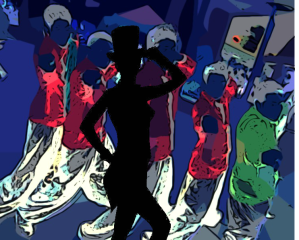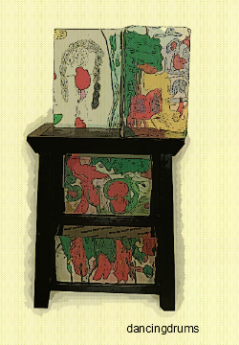
Heroic individuals surmount insuperable odds to achieve greatness. They persevere single-mindedly against financial and social pressures to achieve their dreams. But this narrative is about a person who did exactly the opposite.
It was my fathers dream that I become a violinist. He loved the sound of the instrument and during his own formative years had strongly desired to learn to play it. But due to financial constraints and other family responsibilities, he never got the opportunity. So when I was around five years old, he bequeathed the dream to me. Only I did not want it. I found Bharatnatyam with its beautiful clothes and jewelry so much more preferable to sitting around drawing a bow over 4-strings. Moroever, at the time, classical music did not sound appealing.
Given that we were in an place where carnatic violin teachers were non-existent, father started me off on Hindustani track with Mr R.S. Mr R.S was a skinny, kurtha-clad, partially bald Marathi gentleman in his 50s who was employed at the local All India Radio station. He patiently taught me the basics and that is where we got stuck. We stayed at the basics for years. Having no interest in the instrument, I never practiced outside of his classes and consequently Mr R.S did not see it fit to teach me advanced lessons– much to father’s frustration. Luckily for me, Mr R.S. (who incidentally rode a moped) decided to accept a job offer in the US and brought to an end our mutually frustrating efforts – to teach on his part, and not to learn on my part.
After a blissful but all too brief lull, teacher #2 was presented to me. Mr G was a scooter-riding professor at the local music college and insisted on revisiting the basics – again. So we spent a whole year before he (thankfully) became consumed with preparing for the festival of India in which he was participating. So consumed that he had no time for me. How serendipitous!
Unfortunately, by this time, father had upped his game and managed to locate not just one but two experts in carnatic-style fiddling. He was apparently determined to ward-off any potential discontinuity in instruction…so he hired them both! Teacher #3 was an idli and filter coffee loving bachelor who worked at a local bank branch. He had a fascinating unibrow, and his moustache, which was half the unobrow’s length, was equally lush. All-in-all, he was a hairy, pudgy, motor-cycle-riding bachelor who was more interested in regaling an audience (me) with his musical talent than imparting knowledge. Mom gave him coffee and snacks after each lesson. Teacher #4 was a old retired gentleman who bicycled miles from outside the city to instruct me – his lessons were intermittent.
As if these irritating classes were not enough, whenever “dignitaries” (mostly relatives) visited our home, father would casually but proudly, without my consent, volunteer me to play for their entertainment. Very much like in those Jane Austen based BBC productions where one of the daughters is randomly asked to perform at the piano while a small crowd of visitors sits around…
When I revisit those days now, it confounds me to realize that I made so limited progress beyond the geethams inspite of extraordinary efforts on part of my father and well-intentioned instructions from so many teachers.
What finally bailed me out were SSC and HSC exams. Both these provided perfectly valid excuses to discontinue further attempts by father to make me perfect the violin. Mom would intervene by saying “avalluku tution ka apparam timeay kadakyaruthu illai” (she has no time at all after tution classes.) Whew!
Lest I appear ungrateful, I am very thankful now for all the efforts put in by father and the teachers. Despite remaining a relative novice with the violin, those classes were not a waste. I understand and appreciate all kinds of music today in no small measure because of those years. From Debussy to Muthuswami Deekshitar, from Paul Mauriat to Harris Jeyaraj…and everyone in between, I can enjoy.













